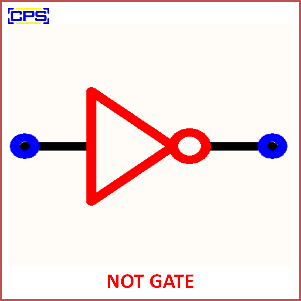A NOT gate, also known as an inverter, is a fundamental digital logic gate that performs logical negation. It outputs the opposite of its input: a logical HIGH (1) becomes LOW (0), and a logical LOW (0) becomes HIGH (1).

Key Features of a NOT Gate:
- Boolean Expression:
- The output (YYY) is expressed as: Y=A‾Y = \overline{A}Y=A where AAA is the input.
- The bar over AAA represents negation or inversion.
- Truth Table:
| Input A | Output Y (A‾\overline{A}A) |
|---|---|
| 0 | 1 |
| 1 | 0 |
- Symbol:
- A NOT gate is symbolized as a triangle pointing to the output, with a small circle (indicating negation) at the tip.
Applications:
- Signal Inversion:
- Used to invert a digital signal in circuits.
- Logic Circuits:
- Essential for creating other logic gates and complex logical operations.
- Control Systems:
- Employed to toggle signals or invert conditions in control logic.
- Computing:
- Used in processors and memory devices to implement basic logical functions.
Advantages:
- Simple design and easy integration into larger circuits.
- Low power consumption.
Disadvantages:
- Only performs one basic operation, requiring combination with other gates for complex functions.
In summary, a NOT gate is a simple yet critical component in digital electronics, providing logical negation and serving as a building block for more complex digital systems.
